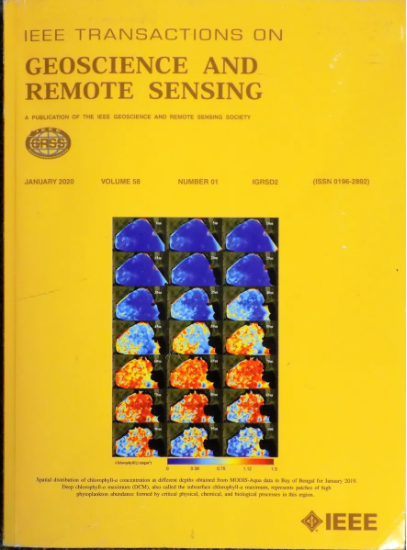基于结构张量约束的全波形反演方法
IF 8.6
1区 地球科学
Q1 ENGINEERING, ELECTRICAL & ELECTRONIC
IEEE Transactions on Geoscience and Remote Sensing
Pub Date : 2025-01-20
DOI:10.1109/TGRS.2025.3532078
引用次数: 0
摘要
全波形反演(FWI)是一种获取速度模型的方法。由于其理论的完备性,最终的建模结果往往优于速度建模方法,如叠加速度分析、偏移速度分析和速度层析。FWI通常以观测数据与模拟数据残差的$L2$范数作为目标函数。通过求解目标函数得到与观测数据最拟合的当前速度模型。然而,在FWI期间,由于条件有限,存在很强的不适。为了解决这一问题,通常引入正则化约束或梯度预处理方法。在本文中,我们提出了一种包含先验信息的正则化方法,旨在一定程度上缓解上述问题。该方法在原有的L2范数目标函数基础上增加了基于结构张量的正则化项,在常规正则化约束中引入了地下结构信息。对层间界面速度模型进行平滑处理,使反演结果与真实速度模型更加吻合。Marmousi模型和BP 2004基准速度模型的综合反演结果验证了该方法的可行性和有效性。噪声数据FWI进一步证明了该方法的鲁棒性。此外,该方法能较好地恢复速度模型中的小尺度结构,显著提高速度模型的分辨率。本文章由计算机程序翻译,如有差异,请以英文原文为准。
A Full-Waveform Inversion Method Based on Structural Tensor Constraints
Full-waveform inversion (FWI) is a method for obtaining velocity models. Because of its theoretical completeness, the final modeling results are often superior to those of velocity modeling methods such as stacking velocity analysis, migration velocity analysis, and velocity tomography. FWI usually takes the $L2$ norm of the residuals between observed and simulated data as the objective function. The current velocity model that best fits the observed data is obtained by solving the objective function. However, during FWI, there is a strong ill-posedness due to its limited conditions. To solve this problem, regularized constraints or gradient preconditioning methods are commonly introduced. In this article, we propose a regularization method that incorporates prior information, aiming to alleviate the aforementioned issues to some extent. This method adds a regularization term based on structural tensors to the original $L2$ norm objective function, introducing subsurface structural information in conventional regularized constraints of FWI. It smooths the velocity model along layer interfaces to ensure that the obtained inversion results are more consistent with the true velocity model. The inversion results from synthetic data of the Marmousi model and BP 2004 benchmark velocity model demonstrate the feasibility and effectiveness of this method. The noisy data FWI further demonstrates the robustness of this method. Moreover, the proposed method can better recover the small-scale structures in the velocity model and significantly improve the resolution of the velocity model.
求助全文
通过发布文献求助,成功后即可免费获取论文全文。
去求助
来源期刊

IEEE Transactions on Geoscience and Remote Sensing
工程技术-地球化学与地球物理
CiteScore
11.50
自引率
28.00%
发文量
1912
审稿时长
4.0 months
期刊介绍:
IEEE Transactions on Geoscience and Remote Sensing (TGRS) is a monthly publication that focuses on the theory, concepts, and techniques of science and engineering as applied to sensing the land, oceans, atmosphere, and space; and the processing, interpretation, and dissemination of this information.
 求助内容:
求助内容: 应助结果提醒方式:
应助结果提醒方式:


